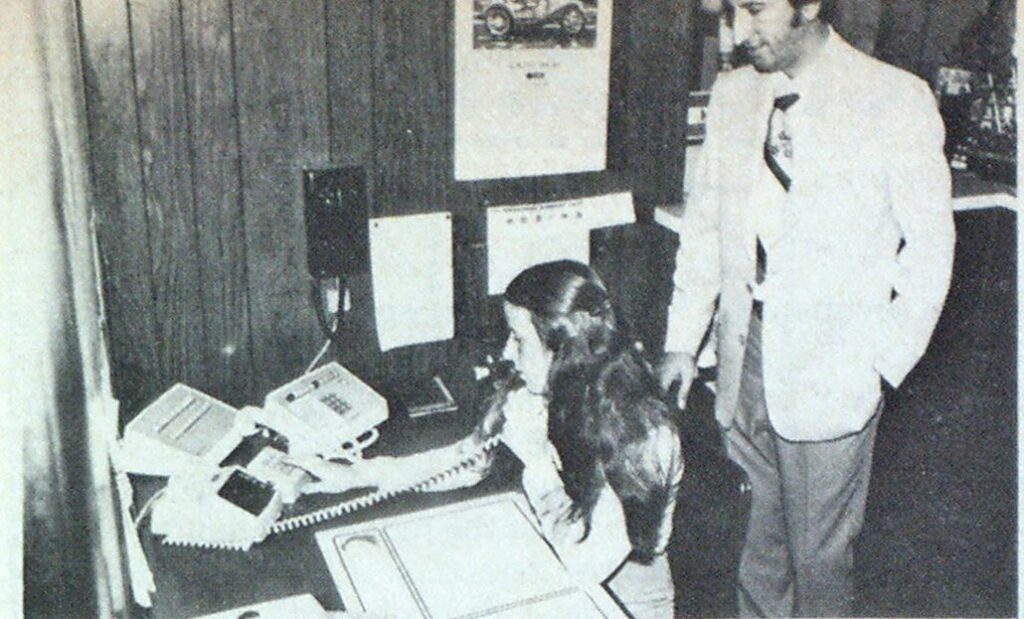
Remote Radio Alerting for Volunteers
features


Without manning its base station 24 hours a day, the Marmora, N. J., Volunteer Fire Company can summon its fire fighters through the use of three remote dispatch stations in a recently installed radio alerting system.
In addition to the remote station equipment and the base radio station, the system includes 30 Plectron model 700 home monitors, encoders, decoders and leased telephone lines.
The fire company has had a base radio station, which it used intermittently, on the Cape May County fire frequency for several years, but a radio alerting system was deemed unfeasible because of the lack of round-the-clock manning of the base station at the firehouse. There is no local police department to man the base station and other 24-hour facilities are too far away.
Previous system
Volunteer citizens have answered the fire company emergency phone calls since its inception in 1947. These volunteer dispatchers had extensions of the fire emergency phone in their homes or places of business, and from five answering locations, they were able to blow three outside sirens in the community. Although the lines were installed and maintained by New Jersey Bell Telephone, the system was at times difficult to keep in operation and was limited to blowing the sirens.
To overcome the lack of 24-hour dispatchers at a single location, it was decided to use the base station’s remote control capability to allow radio transmissions from three places in addition to the firehouse.
Engineered by David Reitzel of Reitzel Communications in nearby Northfield, N. J., the system uses a G8 Plectron encoder to activate the 30 receivers. The three existing sirens were thought necessary, especially for daytime operations, and were equipped with H10 decoders programmed for both alarm and test use.
Remote units
Leased telephone lines for radio control connect each of the three remote locations with the firehouse. At each of these three sites, a remote unit manufactured by Solid State Communications was installed. These model 801A remotes include a handset with talk switch for voice transmissions over the base station. Incorporated with the remote unit is a 12-button touch pad similar to that used on a touch-tone telephone. This touch pad is used to send tone signals to a Solid State Communications model 304 decoder. This decoder is in turn wired to the Plectron encoder. From this point, the system is a normal alerting installation.
Thus, a dispatcher at a remote location can perform all the functions that an operator at the firehouse can do. Presently, only four functions the encoder (activation of monitors, siren for alarm, siren test, and siren cancel) are active, but should more functions be needed, it is possible to handle up to seven more from the remotes. The remote dispatcher also has voice transmission capability and therefore can handle radio traffic until the base can be manned by incoming personnel at the firehouse.
Marmora’s fire district comprises approximately 18 square miles of primarily rural and low density residential areas with a few commercial occupancies. Not all firemen could hear the sirens even under the best of conditions, so some individuals had to alert many of the men by phone. While the new system still depends on volunteer dispatchers, it has two great advantages: There is a radio receiver in each fire fighter’s home and the dispatcher can communicate with the responding apparatus.
Locations of remotes
The locations of the remote dispatchers were selected to assure the best opportunity for 24-hour emergency phone coverage. One remote unit was installed in the chief’s home, where coverage is generally assured at night. A second was located in the home (and business place) of Assistant Chief Tom Ward, where about 90 percent coverage day and night can be expected. The third was placed in the office of a local auto dealership, South Shore Ford, where several members of the staff are also fire company or rescue squad members. Rudy Chiorazzo, president of South Shore Ford, exhibited a fine community spirit by providing this service where coverage can be assured during business hours.
As might be expected, there were some early bugs in the system. The most serious involved some falsing due to apparent stray tones over the leased telephone lines. The problem was solved by adjusting the decoder so that it responds only to a combination of tones produced by the successive depression of two buttons on the remote touch pads. Since the adjustment, there hasn’t been any recurrence of falsing. Operation from the base console at the firehouse still requires only a single button operation.
The Marmora Volunteer Fire Company operates an attack pumper, two 750-gpm pumpers, a 2000-gallon tanker and a 6300-gallon tractor-trailer tanker.

